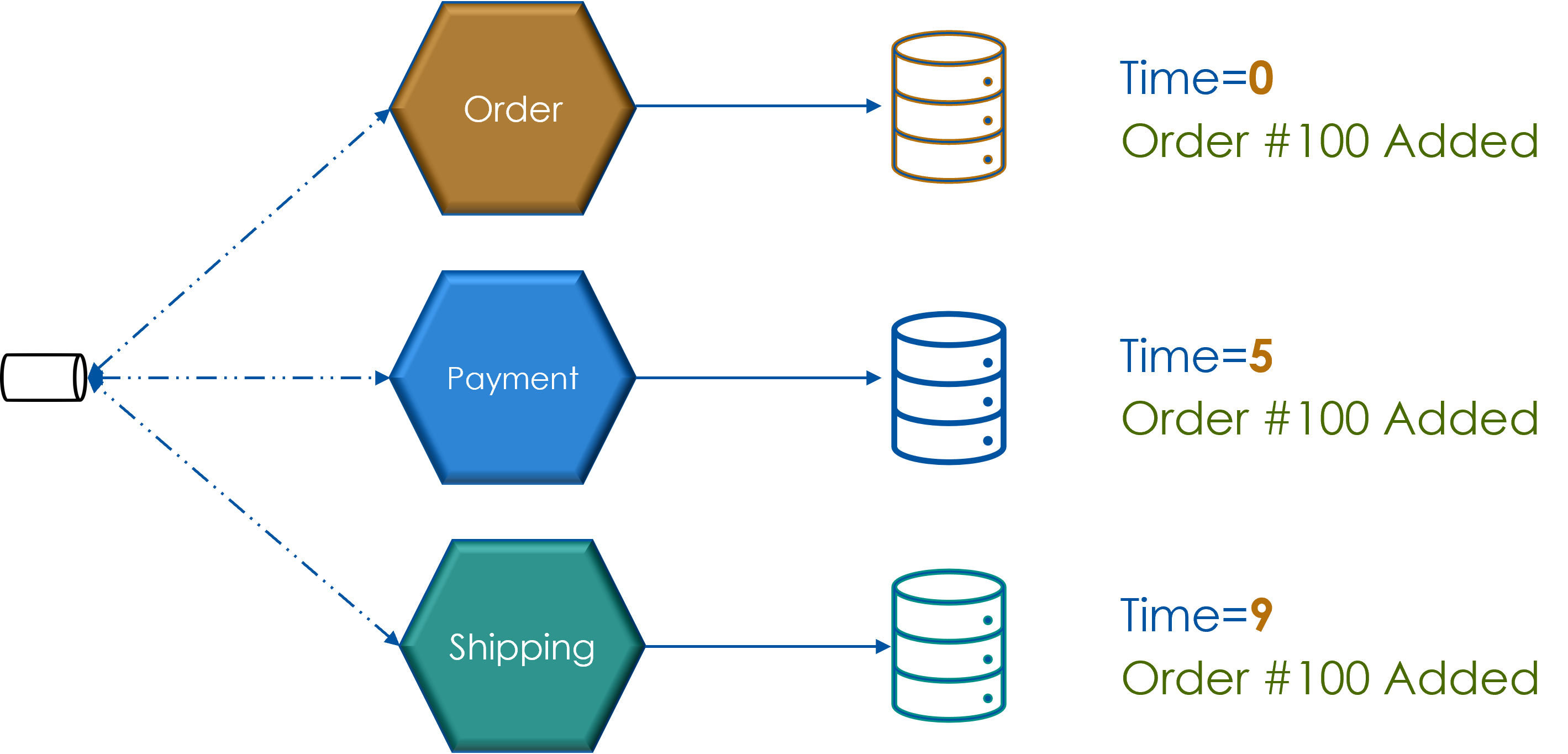SAGA pattern
SAGA Pattern
Objective is to ensure data consistency across microservices that own the data and database platform.
Allows execution of distributed business transactions, executing a set of operations across multiple microservices , applying all or nothing semantics
Distributed transactions = Using Local Transactions coupled with compensating transactions
Think of SAGA like a Pipeline where each step is executed independent of the other step but in a sequence defined in/by the pipeline This continues till ALL steps have succeeded or one of the steps fails
- Each microservice subscribes to events from prior stage microservice
- On receiving an event, microservice, initiates a Local Transaction (T1, T2, T3)
- Each microservice also builds a compensating transactions that rolls back the effect of a transaction
- In case of local transaction failure, microservice:
- Initiates the compensating transaction
- Emits event informing prior stage of the rollback
- Prior stage on receiving the event initiates compensating transaction
- In case of local transaction failure, microservice:
- Either ALL local transactions are successful OR
- One or more microservices initiate the compensating transactions

Example
This illustration shows the SAGA implentation for an eCommerce system that uses EDA. Each microservice implements the:
- Local transaction (T1, T2, T3)
- Compensating transaction (C1, C2, C3)

SAGA Considerations
-
Eventual consistency

-
No Isolation = Intermediate state is visible. SAGA provides isolation level = READ Uncommitted
-
Transaction & Compensations must be idempotent
-
Commutative transactions
-
Transactions & Compensation MUST not be impacted by duplicate events